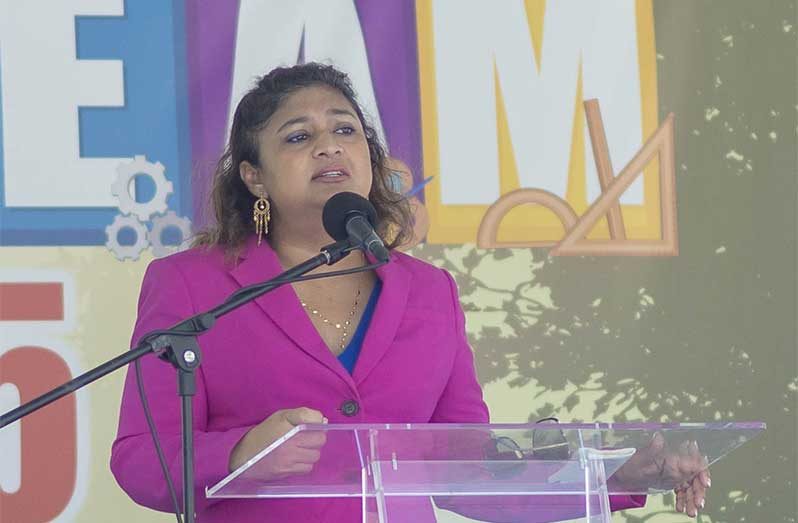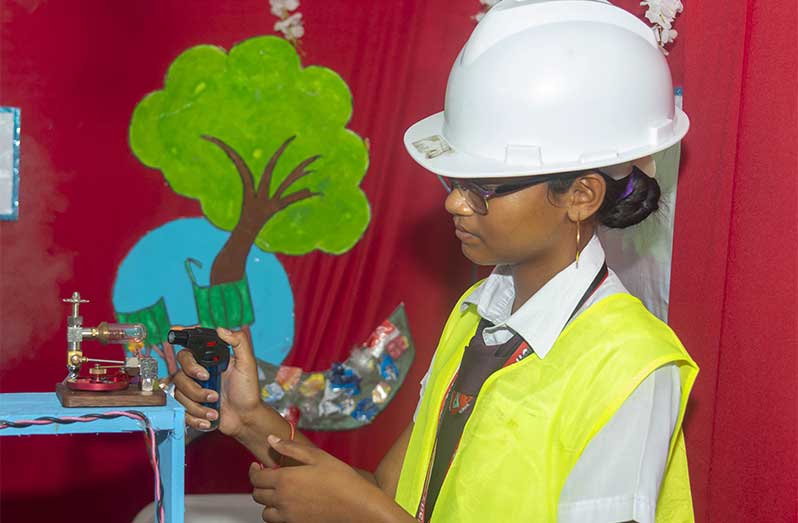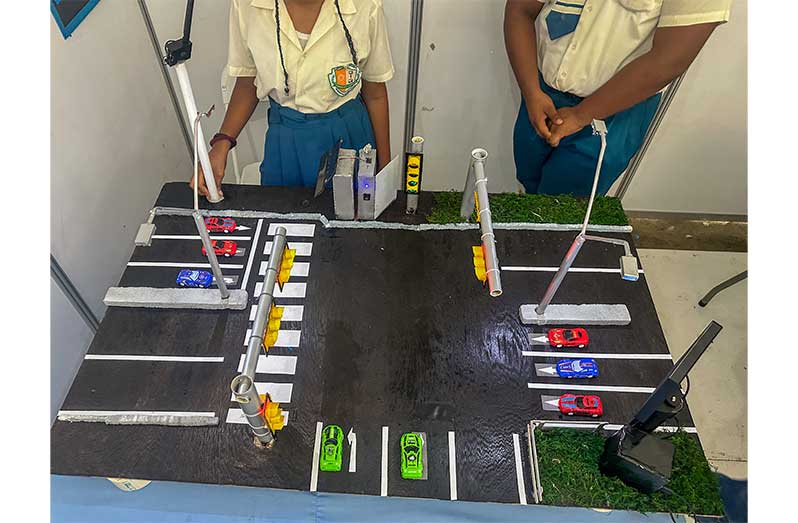Education Minister praises transformative student projects
Guyana’s future changemakers took centre stage this week as the Ministry of Education launched the highly anticipated National STEAM (Science, Technology, Engineering, Arts, and Mathematics) Fair, a celebration of innovation and creativity in Science, Technology, Engineering, Arts, and Mathematics. The event, which runs from April 23 to 25 at the Arthur Chung Conference Centre, features student projects from all ten regions and places a spotlight on grassroots problem-solving across the nation.
Minister of Education, Priya Manickchand, delivered an impassioned address during the opening ceremony, praising students and educators for their behind-the-scenes work that rarely receives public acclaim but continues to drive national progress.
“I’m very, very, very happy to be here today,” the Minister said. “What you see here is really months of the education system encouraging our students and pupils to do what we do every single day, that you don’t get to see on the front page of a newspaper.”
The fair showcases solutions to some of the country’s most pressing issues—from environmental sustainability to infrastructure optimization.
Among the standout projects was one from Justin Ramjiewan and his team at Tagore Memorial Secondary School (Region 6), who developed a method to clean oil spills using sugarcane bagasse—a fibrous, biodegradable sugar by-product. “It’s cost-effective and environmentally safe,” Ramjiewan explained, noting that the main cost lies in transportation.
Equally impressive was Indira Naraine from Abram Zuil Secondary School, who tackled plastic pollution through a waste-to-energy system. Her project involved burning collected plastic in a controlled environment, capturing hydrogen and methane gases for reuse, and using steam to generate mechanical energy. “This is a full-circle solution,” Naraine noted, integrating all aspects of STEAM: science, technology, engineering, arts, and mathematics.
Meanwhile, Jonathan Haley showcased a traffic light optimization system based on real traffic data. His model demonstrated a 30-second reduction in average wait times and a 40% increase in vehicles passing per cycle, significantly improving urban traffic flow and potentially saving lives.
Minister Manickchand urged parents to bring their children to the fair, calling it an opportunity to witness “real inspiration.” “There is no reason why you should not bring out your children over this two-day period,” she said. “I will certainly be bringing mine.”
Closing her remarks, the Minister reinforced the powerful impact of education. “Watching our children build a windmill that could power an entire village might not be as attractive as a sandwich that didn’t have enough butter,” she quipped. “But every single day, in every single classroom across this country, we are changing lives, we are transforming communities, and we are very, very, very proud of that.”
The National STEAM Fair continues through April 25, as students present their visionary ideas—cementing their role in Guyana’s path toward sustainable development.



.jpg)












